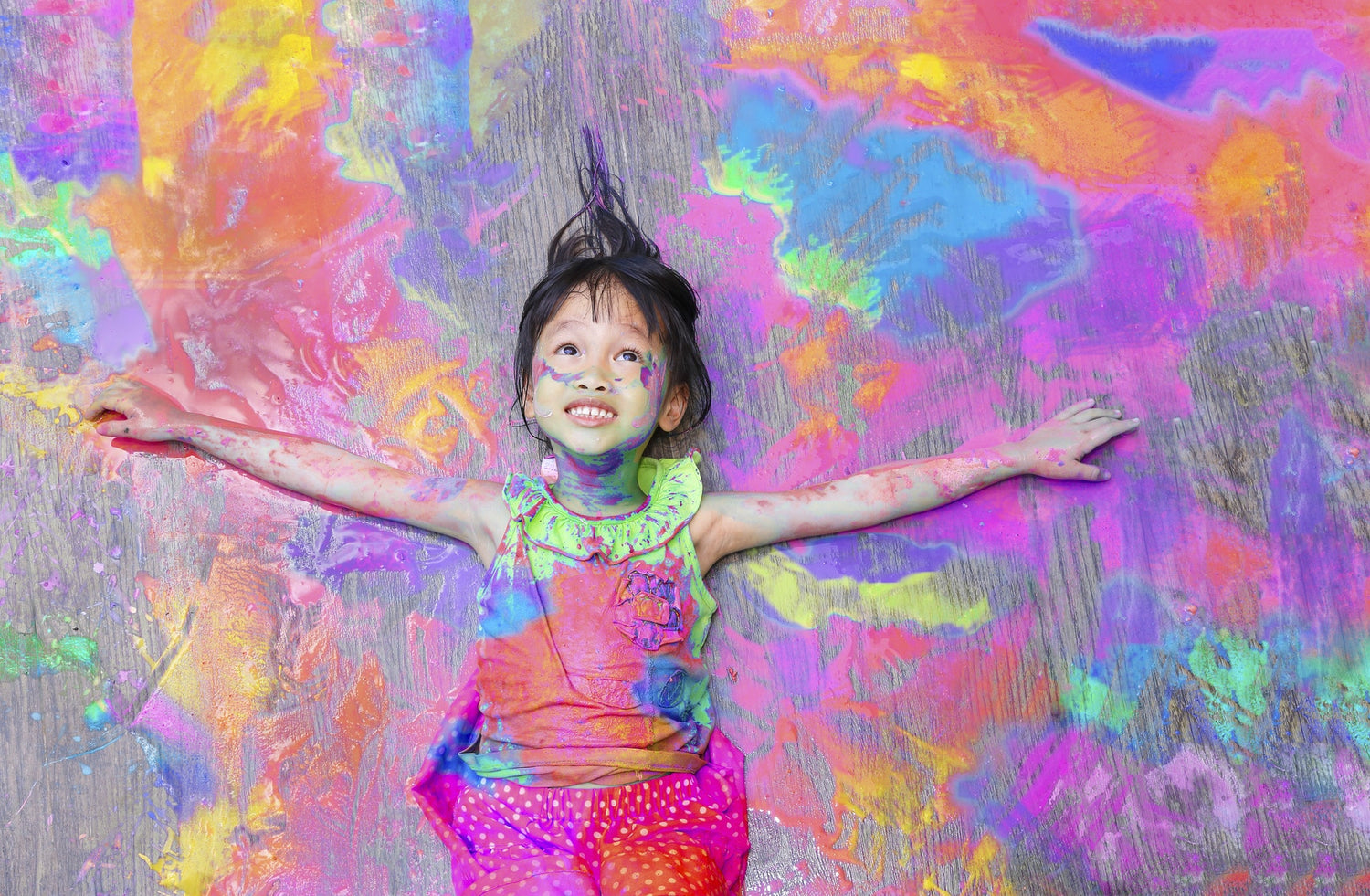For thousands of years, color has been thought to have power over our emotions. Artists, interior decorators, fashion designers, and advertising agencies utilize the meaning of different colors to influence human behavior and attract customers. By considering the lessons of these experts, how can we as parents use the science of color to guide our children’s mood? Does the color we paint their rooms really affect how happy they feel or how soundly they sleep?
History of color psychology
Several ancient cultures, including the Egyptians and Chinese, used color for healing purposes as far back as 2,000 years ago. This type of therapy is called chromotherapy, light therapy, or colorology, and is still used today as a holistic or alternative treatment.
It is believed that color therapy uses the visible spectrum of light and color to change a person’s mood and their physical and mental health. Each color is part of a specific frequency and vibration that can affect certain energy, or chakras, in our body.
Practitioners also believe that certain colors entering the body can activate hormones causing chemical reactions that ultimately influence emotion and help the body heal. Red, for example, is used to stimulate the body and mind and to increase circulation. Orange heals the lungs and increases energy levels. Blue treats pain, while indigo cures skin problems. Finally, green relaxes patients who are emotionally unbalanced and yellow invigorates those suffering from depression.
How color impacts mood
Psychologists have found that color can influence how we feel and can even cause physiological changes in our body. Keep in mind, however, that there are different interpretations of color’s impact on emotions depending on culture and circumstance.
Research shows that certain colors can increase blood pressure, metabolism, and adrenaline. Other studies have found that certain colors can improve sleep habits, boost memory, and enhance academic performance. One study discovered that seeing the color red before taking a test can hurt performance. Students who were shown a red number before taking the test scored more than 20 percent lower than those shown a green or black number.
Just as color influences our mood, it can also be used to describe how we feel. A study reported in the journal BMC Medical Research indicated that people with depression or anxiety were more likely to associate their mood with the color gray, while happier people preferred yellow.
Researchers at the University of California determined that young children chose bright colors to represent positive feelings and dark colors for negative feelings. They were even able to identify how specific colors made the children feel: red is for mad, blue is for sad, yellow is for happy, and green is for glad. Color can therefore be a very helpful tool in accessing children’s emotions instead of relying on them to tell us how they feel.
Institutions like the American Red Cross, St. Jude's Hospital, Boston Children's Hospital, and Scholastic incorporate this ability to connect feelings to colors as a way to better understand the emotions of young children. So if our children tell us they feel gray or blue, are seeing red, or feel green with envy, we will know what they are talking about can guide them through their emotions.
What each color means
Over time, studies have shown how different colors impact us in unique ways. Warm colors, such as red, yellow, and orange, stimulate emotions ranging from comfort and warmth to hostility and anger. Typically, warm colors make us feel happy and cozy. Bold shades of warm colors also help stimulate our mind and energize our body.
On the other hand, cool colors, like blue, green, and purple, relax us, but can also make us feel sad, especially if they are too dark. Despite their soothing nature, cool colors are not always welcoming and can leave people feeling removed and distant. Here's a bit more about the impact and symbolism of colors:
Red
- Excites and energizes the body, increases heart rate, blood pressure, and respiration
- Creates alertness and excitement
- Encourages creativity
- Increases appetite
- Can increase athletic ability, causing people to react with greater speed and force
- Associated with increased aggression, an inability to focus, and headache
- May be disturbing to anxious individuals
Pink
- Evokes empathy and femininity
- Creates a calming atmosphere
- Can become irritating over time, leading to anxiety
Yellow
- Associated with positive feelings of happiness and motivation
- Encourages creativity
- Soft, subtle yellows promote concentration
- Bright shades stimulate the memory and increase metabolism
- Too much can lead to anger and frustration
Orange
- Friendly and welcoming
- Increases alertness
- Inspires interpersonal communication
- Puts people at ease
- Too much can be over-stimulating
Blue
- Calms the mind and body, lowering blood pressure, heart rate, and respiration
- Minimizes feelings of anxiety and aggression
- Creates a sense of well-being
- Decreases appetite
- Can even cool the body
Purple
- Creates calmness
- Encourages creativity
- Light purple engenders peacefulness and relieves tension
Green
- Symbolizes nature and promotes a serene and calming environment
- Associated with health, healing, and well-being
- Soothes the body and mind
- Reduces anxiety
- Promotes concentration
Ways to use color in our children’s lives
Now that we know how specific colors affect our mood, what steps can we take to use color to help our children?
- Use calming colors like blue and green in quiet areas to relax children. On hot days, dress them in blue to cool down body temperature and mood.
- Children who have trouble sleeping or are prone to tantrums and other behavioral issues may benefit from spending time in a blue room.
- If you want your children to sleep well, try using cool colors like blue, green, or purple. Their calming effect can make your child’s room feel spacious and relaxing, like the blue sky or the ocean.
- Avoid painting your child’s room dark, cool colors because they can inspire gloomy, stormy day feelings.
- Bright, warm colors may interfere with settling your child down for naps and bedtime. Save those colors for the playroom since they are known to enhance growth and development.
- Use bright red, yellow, or orange dishes and placemats in the kitchen as these colors are associated with food and stimulate appetite.
- Surround your child with yellow during homework time to enhance attention and focus. Maybe a yellow t-shirt or smock becomes the go-to productivity costume. A yellow tablecloth or placemat at the homework station may help, and keep a yellow folder, pencils, and pencil case handy. If you have a small room dedicated to studying, then definitely paint it yellow!
In addition to these specific actions, spend time talking to your children about how different colors make them feel. Ask them if they agree with the research. As they get older, work with them to choose a new comforter or paint color for their bedroom. Pay attention to their artwork and the colors they use, then talk to them about why they chose specific colors and if it made them feel a certain way.
Ultimately, the more tools we have to effectively communicate with our children, the better off we'll be. Have fun playing with color and exploring what works best for your family.



